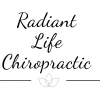Jaw Pain & TMJ
Home » Jaw Pain & TMJ
If you are experiencing jaw pain, it can affect your quality of life and make it difficult to work or relax. However, there is hope for relief. Whether your jaw pain is caused by an injury, poor posture, or a genetic predisposition, TMJ and jaw pain can be treated with chiropractic care. Chiropractic care is the top treatment option for jaw pain and TMJ, and can help you regain your ability to live without discomfort.

What is the evidence that chiropractic treatment can help with jaw pain and TMJ?
There is strong evidence supporting the effectiveness of chiropractic treatment in addressing jaw pain and temporomandibular joint disorder (TMJ). Numerous studies have demonstrated that chiropractic care can help alleviate the symptoms of TMJ.
For instance, a 2014 study reported that chiropractic treatment was successful in reducing the pain and discomfort associated with TMJ.

How does chiropractic treatment work to relieve jaw pain and TMJ?
Chiropractic care provides a comprehensive approach to alleviate jaw pain and TMJ (temporomandibular joint disorder). It utilizes a combination of manual manipulation, stretching, and other techniques to enhance joint function and alleviate pain.
The TMJ or temporomandibular joint is the joint that connects the skull and the lower jaw (mandible). It facilitates jaw movements when speaking, chewing, and yawning.
How long does chiropractic treatment usually take to work for jaw pain and TMJ?
The approach for chiropractic treatment to address jaw pain and TMJ (temporomandibular joint disorder) can differ based on the severity and root cause of the issue. Typically, it may take a few weeks to a few months to see improvement in jaw pain and TMJ symptoms through chiropractic treatment.
Identifying the underlying cause of the condition is the initial step in chiropractic treatment for jaw pain and TMJ.
Who is the best chiropractor for jaw pain and TMJ?
jaw Pain/TMJ Facts
- Chiropractic care can help reduce the pain and discomfort caused by jaw pain and TMJ.
- The Temporomandibular Joint (TMJ) is the joint connecting the lower jaw to the skull.
- TMJ disorders can result in various symptoms such as pain, clicking or popping sounds when opening and closing the mouth, and difficulties in chewing.
- Chiropractic treatment for TMJ may include manual adjustments to the jaw and neck, as well as soft tissue massage and stretching.
- Chiropractic care can reduce inflammation, enhance the range of motion, and alleviate muscle tension in the jaw.
- Chiropractors may also recommend lifestyle modifications such as avoiding hard foods and gum chewing, and stress management techniques.
- Approximately 10 million Americans suffer from temporomandibular joint (TMJ) disorder, which can lead to jaw pain. (Source: National Institute of Dental and Craniofacial Research)
- About 50% of people with TMJ disorder experience jaw pain. (Source: American Dental Association)
- Chiropractic care is a safe and effective treatment option for jaw pain and TMJ. (Source: National Institutes of Health)
- A study of 60 people with TMJ found that chiropractic care reduced pain levels by an average of 56%. (Source: Journal of Manipulative and Physiological Therapeutics)
- A study of 30 people with TMJ found that chiropractic care improved jaw range of motion by an average of 30%. (Source: Journal of Manipulative and Physiological Therapeutics)


